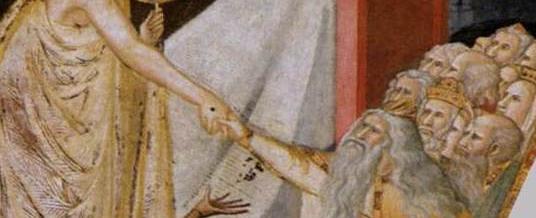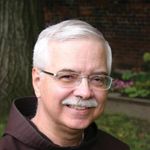Franciscans and Holy Week

Franciscans have played a major role in popularizing the Stations of the Cross to commemorate Christ’s journey from Pilate’s praetorium, to Golgotha, and to his tomb.
According to the New Catholic Encyclopedia, the first stations outside Palestine were set up in the fifth century in Bologna’s Church of San Stefano. In 1099 the First Crusade seized the city of Jerusalem, including the remains of its fifth-century Church of the Holy Sepulchre.
Less than a century later, the Crusaders were expelled from Jerusalem. Former Crusaders and pilgrims to the Holy Land helped promote the Stations of the Cross devotion in Europe, starting its spread throughout the world. In 1342 the Franciscan Custody of the Holy Land was recognized by the Muslim rulers and the Holy See as the Western Church’s representative at major shrines in Bethlehem and Jerusalem, a service they continue to fulfill.
Between 1731 and 1751, Saint Leonard of Port Maurice, a friar of the Observance, was estimated to have set up 572 sets of stations inside and outside churches. By then the practice had become increasingly common in parishes, religious houses, shrines, and cemeteries. The number of stations was set at 14 by Pope Clement XIII in 1731.
Leading the Way of the Cross every Friday
Every Friday afternoon, the Franciscans lead the Way of the Cross starting in the courtyard of a Muslim school, thought by some to be the site of Pontius Pilate’s headquarters in what is now the Old City of Jerusalem. Pilgrims accompany them through the narrow streets of the Arab and Christian Quarters, accompanied by a kawas, who maintains order, a role established when the Turks ruled this area.

The last four stations of the Via Crucis are celebrated in the Basilica of the Holy Sepulchre that also houses the tomb of Jesus. A simple first-century structure marking the site of Jesus’s tomb was destroyed in the second century AD by order of Emperor Marcus Aurelius, who replaced it with a temple to Aphrodite. Two hundred years later, Saint Helena, mother of the Emperor Constantine, led the movement to erect the Basilica of the Holy Sepulchre over that pagan shrine’s site. The basilica was largely destroyed in the eleventh century and then later rebuilt.
Because all Christians regard this building as a holy place, the Turks in 1852 drew up a status quo agreement regulating the spaces used by the Latins (represented by the friars), the Greek Orthodox, and the Armenians and when each group could hold their services. That agreement has been honored during the British mandate (1918-1948), the Hashemite Kingdom of Jordan (1948-67), and now the State of Israel.
Living and celebrating in the Basilica of the Holy Sepulchre
Any major construction in the basilica requires the agreement and equal financing by the Latins, Greek Orthodox, and the Armenians. In recent years they have supervised major work to stabilize the edicula (small building over Christ’s tomb) and install beautiful designs on the dome above it.

Coptic, Syrian, and Ethiopian Christians also have small spaces and rights to celebrate within the basilica. Small communities of friars, Greek Orthodox monks, and Armenian monks have living quarters within the basilica. The friars and monks are locked in at night, and two Muslim families hold the key to the main entrance.
View information and photos about this basilica and the Franciscan Custody of the Holy Land.
Franciscans have played a significant role in the Church’s Holy Saturday liturgy.
Although we tend to see Holy Saturday as a day of rest, medieval Christians saw it as a very busy time because Jesus was leading into heaven Adam and Eve and all the just people who died before Jesus did.
In a recent talk at the Franciscan School of Theology, Father Stephen McMichael, OFM Conv., explained the Vita Christi medieval texts (starting with Bonaventure’s Tree of Life) and the later medieval artwork reflecting this theme, starting with two panels in Assisi’s lower Basilica of St. Francis.
To learn more about Franciscans and the Holy Saturday liturgy, view a presentation by Father Steven McMichael, OFM Conv., associate professor of theology at the University of St. Thomas.
-----
Main image: “Harrowing of Hell” by Pietro Lorenzetti in the lower basilica of San Francesco in Assisi. It is sometimes called “Descent into Limbo.” The image is in Wikimedia Commons, public domain.
Pat McCloskey, OFM
Editor of St. Anthony Messenger
Pat McCloskey, OFM, Franciscan editor of St. Anthony Messenger, has an MA in Franciscan studies. Peace and Good: Through the Year with Francis of Assisi (Franciscan Media) is his latest book.

